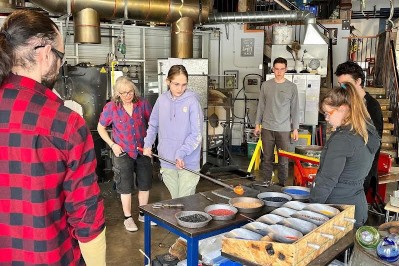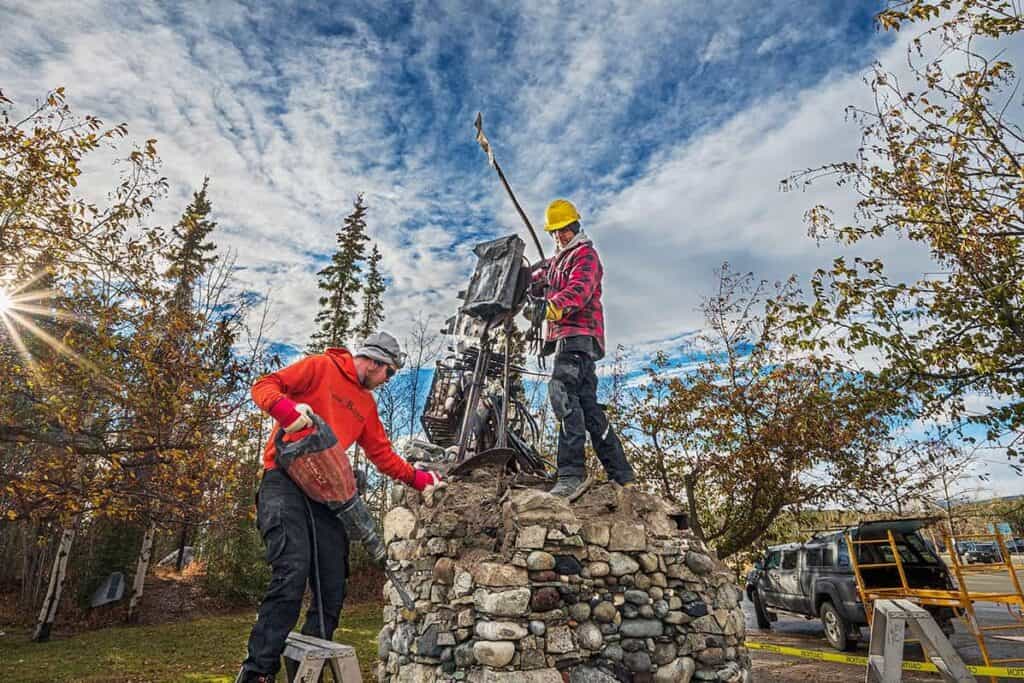Beautiful portraits of the people and dogs of Colville Lake, NWT, encircle the Yukon Arts Centre Community Gallery.
Arctic Journal was put together by Deb Jutra in honour of Bern Will Brown. Jutra knew the artist as Father Brown, her Catholic priest when growing up in Uranium City, Saskatchewan.
Brown arrived in the Arctic in 1948 as a 28-year-old Oblate missionary.
He became known as the “Padre of the Logs” for his work constructing missions and churches in the Far North with very-limited resources. In 1962, he moved to Colville Lake where he built Our Lady of the Snows Mission and church.
The North gives many people latitude to develop a wider range of skills than they might have in the south. Brown seems to have embraced this opportunity.
He gained a reputation as an explorer, bush pilot, hunter and dentist as well as a priest. Of course, as an artist as well.
Brown shot 32-mm slides and 16-mm moving pictures. “Nothing proved more popular with my congregation than these scenes – they were the stars,” reads a panel on the wall, an excerpt from his Arctic Journal (his book).
Beside it, another panel bears a quotation, excerpted from his Arctic journals, talking about his marriage in Colville Lake and the consequent evolution of his life there.
Although no longer officially a Catholic priest, much of the spirit of that role continued for him. In the NWT, he was “still a registered clergyman”.
Two books accompany the show. A Time in the Arctic contains a wider collection of his Northern photographs. You can enter a draw to win his Arctic Journal, which focuses more on his writings.
A VCR offers clips that include Brown in Dennis Allen’s film, The Hunt – Food from the Land.
Small reproductions of Brown’s paintings show that he also took these images into paint.
Brown created finely rendered portraits of the people he worked among, and their dogs.
The 16 enlarged photographs that bracket the show have the most-visual impact. Brown’s skill at both composition and portraiture shine in these pieces.
A couple with their young child is framed against their canvas wall tent, a jaunty cigarette in the corner of the gentleman’s mouth. Salmon or char dries like irregular prayer flags. Two young women scrape hides: one cheerful, one looking quite miserable …
Four young First Nation girls hold six puppies that overflow their arms. A woman crosses the ice with a lard can. The viewer is arrested by a husky’s blue-eyed gaze …
A child leans on a gun that is taller than he is. A Boy Scout regiment stands in strict formation. There’s a close-up of dogs in harness that is just lovely.
It seems that these pictures must come from Brown’s slides. In that case, they’ve been cropped from his original shots, so some of the compositional punch has been added after the fact.
Nevertheless, they’re worth seeing. They offer a window into Colville Lake and the traditional lifestyles practised there.
Their brilliance lies in the way they introduce us to the people Brown clearly cared deeply about.
Arctic Journal continues until July 6 at the Yukon Arts Centre Community Gallery. Make it part of a trip to see Ted Harrison’s Painting Paradise and Joseph Tisiga’s Indian Brand Corporation in the main gallery.
In fact, Arctic Journal makes an interesting companion to Harrison’s stylized depiction of Yukon village life and portraits of individual First Nation girls as well as to Tisiga’s quizzical critique of a First Nations position in contemporary culture.




